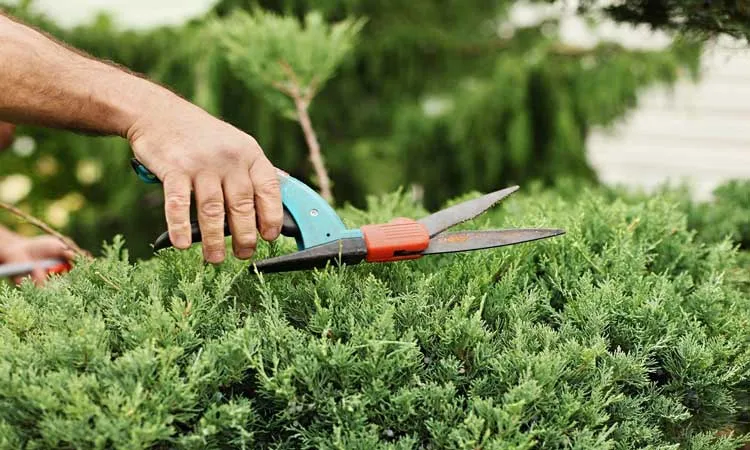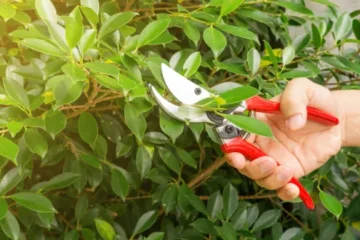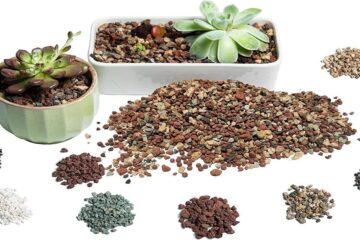Juniper trees are one of the most popular trees for bonsai. If you are thinking about choosing a juniper bonsai tree, you may wonder if it can live indoors. It is a common misconception that bonsai plants should be kept indoors. In fact bonsai trees should be outside. On that note, can juniper bonsai live indoors?
Juniper bonsai plants should not be kept indoors. A juniper tree is an outdoor plant that should have full sun exposure during the warmer months. During the winter, when temperatures drop below 20 degrees Fahrenheit, it is best to store your bonsai in an unheated area.
What are the characteristics of juniper bonsai trees?
Content Overview
Juniper bonsai are evergreen plants that usually have one or more trunks and many branches. They come in a different of shapes, sizes and colors, making them a popular choice for bonsai gardeners and indoor plant enthusiasts.
Junipers do well in both hot and cold climates, making them an ideal choice for those who live in warmer regions or want to grow their bonsai in an outdoor garden. They also come in both formal and informal styles, ranging from compact with short trunks to more sprawling with tall trunks.
Can Juniper Bonsai Live Indoors or grow Juniper Bonsai Indoors?
No, a juniper bonsai is not an ideal plant to keep inside. If you keep your juniper bonsai plant year round, your plant will start to look weak and sickly and eventually die. When a juniper tree dies, you will see the needles turn yellow and fall off .
Several things interrupt juniper from growing indoors.
At first, juniper bonsai tress need plenty of sunlight, at least four hours a day. Juniper Tress need lots of sunlight to grow at their best. How much sunlight a tree needs depends on the species of juniper you choose. With some plants, you may get better growth if they get more direct sunlight.
Another problem is with the plant’s dormancy period. A juniper tree needs exposure to different seasons in a specific order. This is a common feature of all outdoor plants and is a natural process.
During the dormancy period, your juniper bonsai should stop growing to survive the winter. Also, at the same time they prepare for spring. This is an essential stage for plant growth.
When you choose to get plants indoors, the tree cannot go into a dormancy period. This will disrupt the normal flow of plant growth. As a result, it will die.
Growing a juniper indoors is not impossible. But you need to create the conditions so that a juniper bonsai can survive. And creating such conditions indoors will be a difficult task to overcome.
So, if you can grow a juniper outdoors, you should choose it any day. However, if you’re sticking with the indoor option, you’ll need to create a suitable environment.
Creating an Indoor Environment for Juniper Bonsai
Now, the thing is, you probably can’t simulate sunlight inside your home. You still need to rely on sunlight to give the Juniper tree proper light. So, choose a place where you can get direct sunlight even inside your home. If you do not have such a space, it is impossible to have a juniper bonsai inside your house.
The next thing to create is humidity. Humidity is an important factor in replicating the outdoor conditions of a particular season. To do this, you can use a heating system or air conditioner and get the perfect humidity for your juniper bonsai. If you don’t want to spend a lot of money on those items, you can use a humidity tray.
Another thing to control is temperature. It helps if you never let the temperature go below 50 degrees. Most juniper bonsai grow in warm temperatures, so you need to maintain it to keep the plant alive. You can use a thermostat in your home to keep the right temperature. And if it is possible, dedicate a room to growing bonsai trees.
Generally, these three things are enough to create a suitable environment for a juniper bonsai indoors. But you will undoubtedly face a more challenging time creating this type of situation indoors. Apart from that, it is about taking care of the tree and maintaining it.
So, let’s take a look at those aspects to get a complete idea of growing a juniper.
How is a juniper bonsai cared for?
For a juniper tree to survive, it needs to be outdoors with the right environment. If you keep juniper plants indoors, they need proper care because they grow indoors. Some basic care needs include:
The Soil
First of all, you have to think about the soil. Avoid using soil that may be too wet or has poor drainage as this can cause your plant’s roots to rot.
Also, don’t get too dry soil. It will help if you aim for soil that stays moist, but not too much. You may need to let the soil dry out a bit occasionally.
Real Also :5 Best Types of Bonsai Soil For The Bonsai Gardeners
Sunlight
Juniper bonsai plants should be exposed to at least 4 to 5 hours of direct sunlight per day. During spring, summer and fall, your juniper bonsai should be outside. You can place your plant on a patio, deck, balcony or in your garden. They grow best if exposed to morning sun and afternoon shade. Also, if you keep your juniper bonsai indoors, you can use juniper bonsai artificial lights.
Watering
As for the habit of watering, you need to maintain a decent schedule. The worst thing to do is over-water your bonsai. So, make sure you don’t over-water your plant. There are a few other things you need to maintain for watering.
Keeping the juniper in a more humid environment is very important. To avoid over-watering while maintaining humidity, you can use a water mist. Do this using a spray bottle, and you can easily maintain proper humidity.
If you want a better option, you can use a humidity tray. This helps you get the perfect humidity for your juniper bonsai. Fill a tray with some water and gravel. Then place the bonsai on the stone. Just make sure that the water does not get on the plant.
All you’re doing here is creating a moisture source. So, the goal here is not to water your plant but to keep it moist.
Use a Soil Moisture Meter
Serious bonsai gardeners will use a moisture meter to accurately measure soil moisture near the bonsai’s roots. Using this tool takes the guesswork out of watering your bonsai plants and prevents beginners from over- or under-watering their plants.
Feel the Soil
Many gardeners use their fingers to easily test the soil of their bonsai plants. The gardener digs into the soil about an inch deep. If you’re not experiencing much moisture, it’s likely time to water your plant.
Use a Chopstick
Some bonsai enthusiasts use a wooden chopstick (or other untreated wood) to measure soil moisture levels. This method involves placing the chopstick on the ground for 10 minutes and then removing it to see if there is a dark watermark on it. If the chopstick comes out without changing color, it’s time to water your bonsai tree.
Check the Weight
As you gain more experience with bonsai gardening, you will be able to tell if your plants need water just by picking them. By lifting the plant, you will be able to check the weight and whether the soil is now waterlogged. Dry plants weigh less than well-watered plants.
Airflow and Humidity
Juniper bonsai need good ventilation to survive. If you store your plant in an unheated shed or garage (more info below), it’s a good idea to invest in a small fan for air circulation. Juniper plants also need moisture to thrive. Keeping a juniper indoors and misting it occasionally will not create the humidity level it needs.
Fertilizing
The best time to fertilize your juniper is during the growing season. This means you should feed them in the summer and spring to get the most benefit from fertilizer. Do this every six weeks and be sure to check the plant’s water level as well.
For fertilizers, it is always better to use urea free liquid fertilizers. You want a fertilizer for your juniper that is rich in nitrogen. Also, don’t fertilize too much. Make sure to keep it moderate.
You should not feed your juniper bonsai during the dormancy period. Therefore, avoid feeding your juniper during the winter.
Pruning
Image Credit : gardeningkhowhow.net
Juniper bonsai are strong tress that can withstand aggressive pruning. When pruning a juniper bonsai tree, it is important to save the growing tips of the branches or you risk weakening the tree and causing the needles to turn brown. Regular bonsai pruning and thinning of the leaves will ensure that pests cannot colonize it. However, you should make sure that each branch has leaves that you want to keep alive otherwise it will not re-sprout from bare plant parts.
Wiring
In order to maintain the correct shape of the juniper, you need to opt for wire. Wiring will ensure that the tree stays the shape you want it to be styled. There are several ways to style a juniper bonsai tree.
This is an important maintenance step that comes right after pruning. So, after you have pruned and thinned the tree, you should choose the tree to wire and shape it to your liking. When wiring, be sure to leave it a little loose. Although juniper can hold the wiring pretty well, you don’t want to damage it in any way.
Read Also :How To Wire a Bonsai Tree? The Complete Guide To Make Your Bonsai Aesthetic
Repotting
Repotting your bonsai tree encourages growth. How often you should prune your bonsai tree depends on the age of the tree. A young bonsai (less than six years old) should be repotted every year. An old bonsai tree only needs to be repotted every 3-4 years. When you restore a bonsai tree, you are changing the soil and pruning the roots.
Pests and Diseases
With proper care and maintenance, junipers can be quite resistant to pests and diseases. It is especially important to check for pests in the winter when they are most likely to occur. Juniper plants can be attacked by a variety of pests including:
- Scales
- Aphids
- Mealy Bugs
- Needle Miners
- Webworms
- Spider mites
These pests can be controlled if detected early and treated effectively. Insecticidal soap should be used once every five to seven days to kill new hatchlings. Read the directions included with your insecticidal soap and use it accordingly. If used incorrectly, you risk accidentally killing your plant.
The biggest concern of juniper bonsai plants is fungal rust disease. Some juniper species are more resistant than others. Rust fungus blooms can cause permanent damage to a juniper tree.
With these conditions in mind, a juniper bonsai tree should spend most, if not all, of its life remaining strong and healthy.
What are the best juniper bonsai varieties for indoors?
We recommend choosing a juniper bonsai that has green leaves for indoor living. Some of our favorite varieties include:
Sergeant’s blue: This variety is compact with bright green leaves.
Shimpaku : The Shimpaku has gray bark and dark green leaves that turn red during the winter months.
Goshen Juniper :Goshen juniper has blue leaves, making it an attractive choice for your bonsai collection.
FAQ
How long can a juniper bonsai stay indoors?
Keeping junipers outdoors for most of their lives is a matter of course unless they have no other outdoor activity and are indoors for multiple days. Juniper has a limited lifespan, which is exacerbated by extreme heat or poor humidity conditions. The plant should get at least five hours of sunlight a day.
How do you keep a juniper bonsai alive indoors?
When you put it inside, make sure it gets at least four hours of sunlight every day It may take the longest but you will have to wait years to see juniper Your juniper needs direct sunlight every day, so you need to place it in a bright spot every now and then.
Can outdoor bonsai be kept indoors?
An outdoor bonsai needs winter dormancy to survive, and constant exposure to winter weather cannot be afforded. They need to be kept at the right temperature throughout the year.
Does Juniper Bonsai Need Sunlight?
Your juniper bonsai can benefit from full or shaded sunlight outdoors Be prepared to let your juniper bonsai sleep through its naps, but avoid direct sunlight between dawn and dusk. It is recommended to place junipers in bright light, at least in direct sunlight Four hours a day for improvement.
How Long Can a Juniper Bonsai Live?
A juniper bonsai tree can have a lifespan of over 100 years with proper growing conditions and proper care.
How long does a bonsai tree live indoors?
In reality, bonsai trees typically live 50 to 80 years as long as they are cared for and maintained regularly. It has been more than a century since several famous bonsai trees were created. Such bonsai are sometimes more than a thousand years old.
How do I keep my juniper bonsai alive?
Since juniper bonsai plants require the most amount of moist air, the plant is suited to a specific environment. Mist the leaves regularly and/or use a humidity tray to set the plants. The plant should receive a half-strength liquid fertilizer on a monthly basis. Whenever it grows in spring or fall.
Can juniper be an indoor plant?
In most cases, experts interested in bonsai recommend against growing Japanese juniper indoors. The sun is crucial to their survival and it must happen everywhere in the world.
How much sunlight does a juniper need?
Good drainage and full sunlight are essential for successful growth of junipers. They need 4 to 5 hours of sunlight each day. They lose most of their density by focusing sunlight directly on their leaves.
How much light should a juniper bonsai get?
To get the most sunlight each day, the juniper bonsai plant needs to be grown in soil that will keep its roots moist. If you want your plant to grow, it needs to be outside year-round, as sunlight is a big factor.
Summary
In short, if you’re wondering can juniper bonsai live indoors, the answer is probably no. Yes, you can create a scenario where you can keep them alive during the growing season.
But sooner or later, they have to go through a dormant period. And at that time, keeping them alive indoors is almost impossible. Also, if you create conditions where there is juniper, it will not thrive in growth.
So, the best bet is to try other plants if you’re stuck with growing bonsai indoors. Or if you like juniper a lot, you’ll have to compromise and grow it outside.




